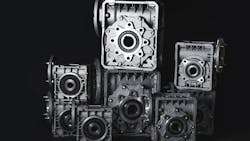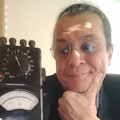Optimize Your Drivers to Maximize Motorized-System Effectiveness
What you’ll learn:
- The growth of advanced motorized systems.
- Considerations in developing motorized systems.
Automation continues to weave itself more into modern society, which means greater use of advanced motorized systems. These systems must operate at the highest possible levels of precision, accuracy, reliability, and safety, in as cost-effective a manner as possible.
To accomplish that, motorized products must not only integrate sensor input and logic commands, they also need to manage and direct the motors as effectively and efficiently as possible. This is an area where custom magnetics can make significant and economical performance contributions to the power circuits involved.
Advanced motion-control circuitry relies on high levels of precision and accuracy in every aspect, from the physical levers and grippers to the resolution of the sensors measuring the actions performed. But all of this functionality and capability is directly related to the power electronics driving the motors, as everything is based on the motor’s ability to apply force in an optimum manner.
Any irregularities in performance due to poor driver electronics will create cascading issues throughout a motorized system. Such problems, as well as issues like noise and EMI, can be managed more effectively with custom magnetics than with off-the-shelf solutions.
Growth of Advanced Motorized Systems
Escalating demand for advanced automated systems is impacting every application space. In the home and business, smart-building technology is changing the way we heat, illuminate, and manage our living and working spaces. HVAC, lighting, and window systems are becoming more automated, as well as the products we use in them, from collating copiers to kitchen appliances. Every one of these applications require efficient and precise power electronics for optimal functionality.
Demand for such systems also is on the rise in specialty application spaces, with markets normally considered advanced needing to keep up. For example, in military and aerospace solutions, which are usually forward-leaning, automated and motorized solutions are being deployed to support more support tasks. In medical spaces, where many systems use pumps and actuators, the number of next-generation motorized solutions abound.
Both of those spaces share with industrial applications the need for advanced robotics, better fluid-management solutions, and generally more accurate and precise motor performance.
In the transportation sector alone, according to Global Market Insights, the value of the electric motors market exceeded USD $17.6 billion in 2021, and will exhibit around a 5.5% CAGR from 2022 to 2032 (see figure). Growing to over $25 billion, industry shipments will exceed 1,619.9 million units by 2032, driven by an increase in vehicle upgrades as well as the benefits of long life, low maintenance, and automated control in motorized systems.
The explosive growth of motorized application solutions underscores the need for optimized performance in the power electronics and motion-control circuitry. That means the highest levels of efficiency, reliability, and safety in motorized products, especially those with direct contact to users. This need is compounded by the regulatory environment, which changes from marketplace to marketplace. Customized magnetics can address both performance and regulatory compliance issues by providing the required design flexibility.
Developing Motorized Systems
When developing a motorized product, several factors must be considered when creating the power and driver electronics involved. Once you determine the operating voltage and current levels, you must address thermal management, noise and EMI, and any form-factor issues. All of these can be tweaked and optimized by using custom magnetic components for both power conversion and filtering.
For example, custom magnetics are more flexible in creating products than those limited to a line-card choice of standard components, which addresses the demand to accelerate time-to-market, too. Customization lets you scale compliance, functionality, and capability in any given product by enabling different levels of performance in the driver electronics. This further extends to circuit-protection and disaster-recovery features.
You also can better address thermal-management issues by increasing efficiency or reinforcing derating capabilities. For example, planar magnetics not only provide a good heatsink platform, they can make the difference on whether or not there’s a need for forced air. This can significantly impact everything from the bill of materials to environmental durability. Magnetic components must manage heat created by operational losses and help move them off the board, for example. A custom planar device can more easily attach to heatsinks or other thermal interfaces.
Furthermore, customization can address supply-chain issues, mitigating fluctuations in component availability with the ability to change certain aspects of a given power solution without significantly impacting the circuit topology. On top of that, custom devices are able to address system ruggedness and product form-factor requirements. For instance, a custom magnetic solution can better meet creepage and clearance requirements in a circuit, for every iteration of performance needed for a given product line.
Beyond optimizing thermal management, the ability to customize planar-magnetic devices to maximize their size and shape advantages can address design constraints. It also enhances the planar transformer’s performance characteristics, such as their lower ac winding resistance, which reduces overall loss.
One of the biggest force multipliers when it comes to custom solutions is you have a complete design review by device, addressing every aspect from feasibility to cost reduction using engineering models to streamline the development process.
Looking Forward
The marketplace for advanced motorized products is rapidly expanding, and design and development issues go far beyond just creating a solution to serve the application. Not only are reliability, functionality, and safety important to focus on in product development, market regulatory compliance is critical, and often constricting. Using custom magnetics in your motor-driver circuits addresses performance issues as well as market compliance and supply-chain matters.
About the Author
Alix Paultre
Editor-at-Large, Electronic Design
An Army veteran, Alix Paultre was a signals intelligence soldier on the East/West German border in the early ‘80s, and eventually wound up helping launch and run a publication on consumer electronics for the US military stationed in Europe. Alix first began in this industry in 1998 at Electronic Products magazine, and since then has worked for a variety of publications in the embedded electronic engineering space. Alix currently lives in Wiesbaden, Germany.
Also check out his YouTube watch-collecting channel, Talking Timepieces.


